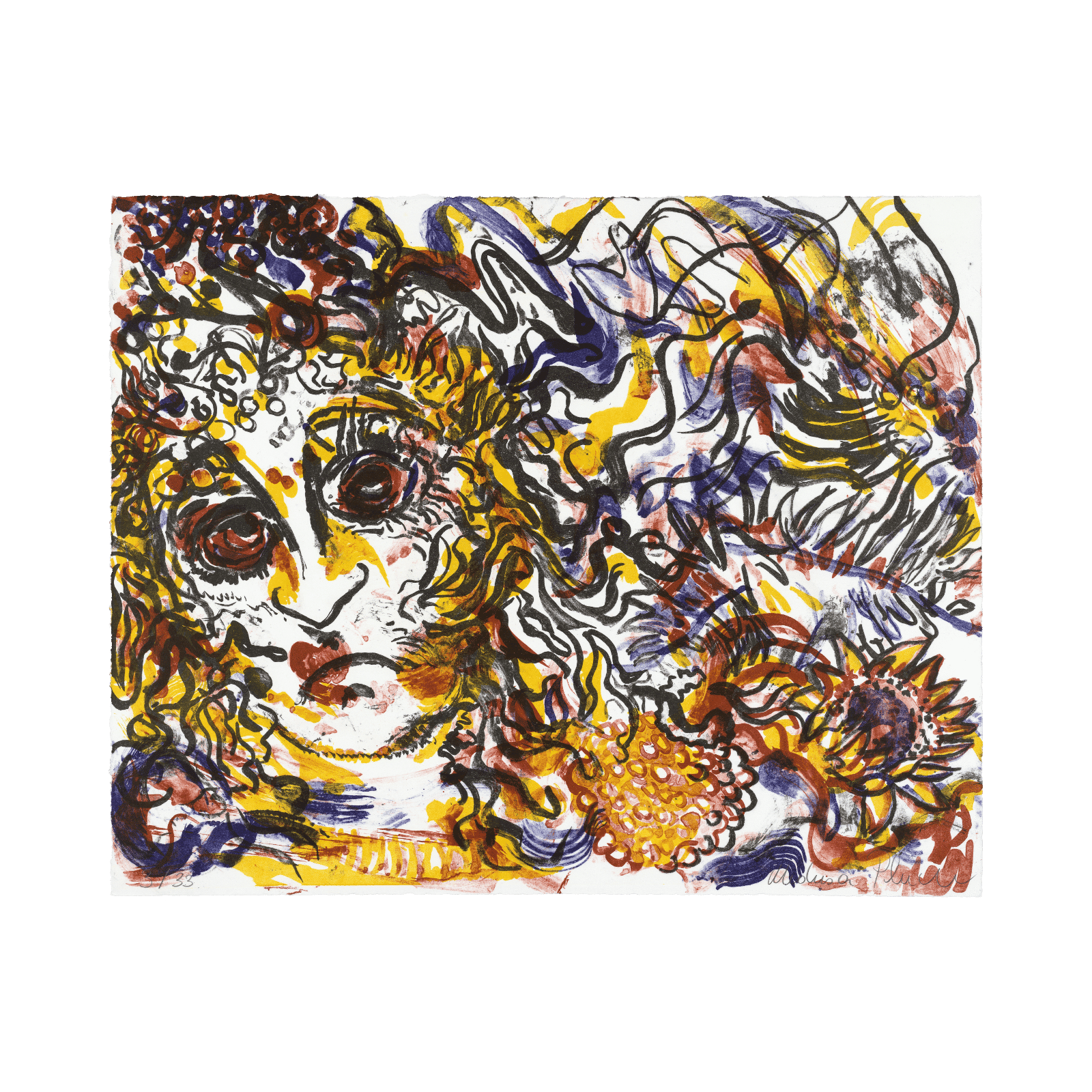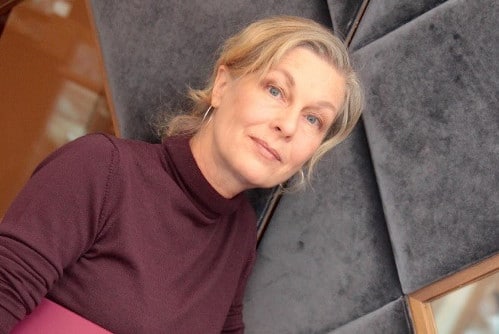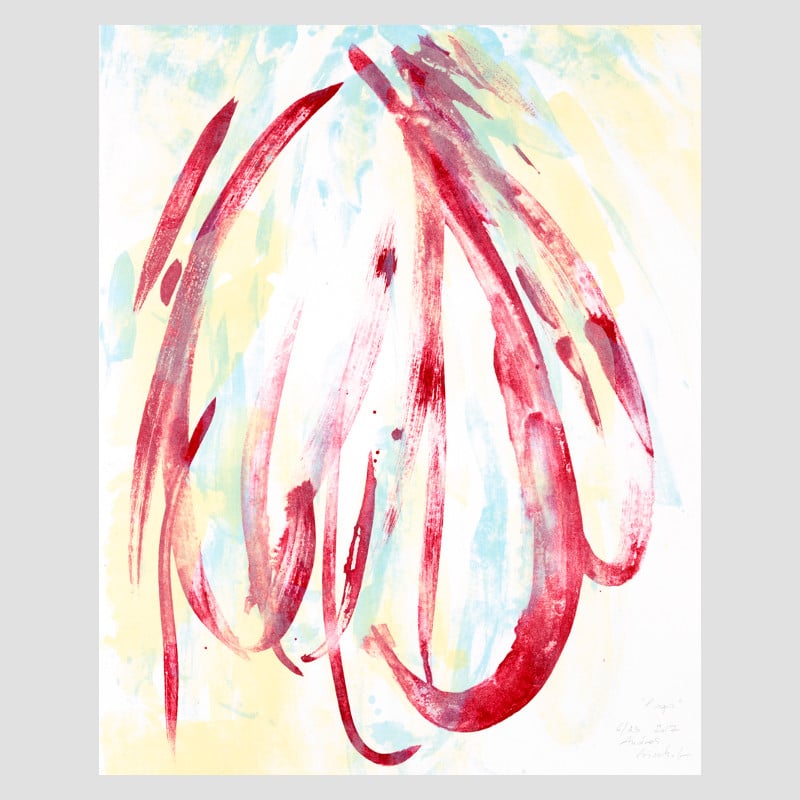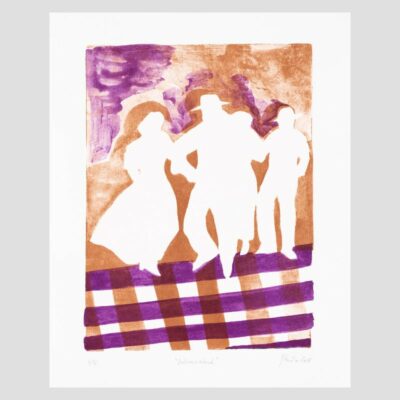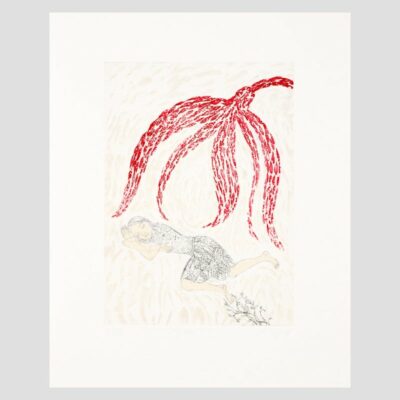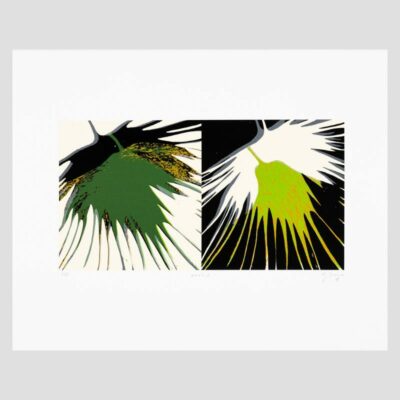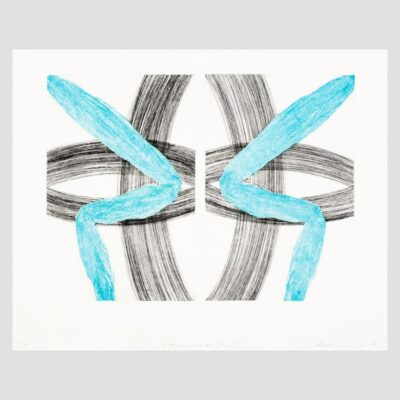Karin Pliem
Medusa, 2020
Karin Pliem
(born 1963 in Zell am See, lives and works in Vienna)
Medusa, 2020, for the art in print series women III
Lithograph in four colours, printed on Magnani Incisioni 300g paper
by Rudolf Hörschläger, Druckwerkstatt Uferstöckl, Wallsee / Lower Austria
Edition of 33 + 5 AP + 2 EP + 2 PP
Signed, numbered, titled and dated by the artist.
40 x 50 cm
Karin Pliem
1963 // born in Zell am See, Salzburg
1982 // International Summer Academy Salzburg (Stipend);
1983 // Atelier Iris Mansard, Biarritz (France);
1983–1987 // University of Applied Arts in Vienna (sculpture, painting);
1992–present – study trips to Southeast Asia, New Zealand, the South Pacific, Turkey, the USA and Algeria.
Recent exhibitions
2018
Université 2, Oran/Algerien (15th Intern. Symposium on Languages, Literatures, Arts, mit Videoscreening L’inifinito della natura)
Stadtgalerie Waidhofen a.d. Ybbs (E, mit Videoscreening L’inifinito della natura)
me Collectors Room Stiftung Olbricht, Berlin/DE (Video L’inifinito della natura)
Parallel Vienna 2018, Wien; kunstGarten, Graz;
Maison des relations internationales Nelson Mandela (mit Video L’inifinito della natura) und Maison de Heidelberg, Montpellier/F
ega: frauen im zentrum, Vienna (E, mit Video L’inifinito della natura)
2019
Austrian Parlament in the Hofburg Wien, Vienna
Bildraum Bodensee, Bregenz (E, mit Videoscreening L’inifinito della natura)
Kunsthaus Muerz, Mürzzuschlag
Traklhaus, Salzburg
unttld contemporary, Vienna (E)
Sammlung Urban, Waidhofen a.d. Ybbs
NÖ Dokumentationszentrum für moderne Kunst, St. Pölten
kunstGarten Graz (mit Videoscreening L’inifinito della natura)
MAB Museum am Bach, Kraßnitz b. Ruden
2020
Kunsthalle Nexus, Saalfelden (with Video screening L’inifinito della natura)
Art Vienna international art fair, Hofburg, Vienna
Galerie Wolfrum, Vienna
Festival Tricky Women 2020, Video screening L’inifinito della natura, Artwork Space, Vienna
Galerie Walker, Weizelsdorf (E)
Kunstverein Paradigma, Linz (E)
Medusa
“I’m concerned with the solidarity between nature, culture and civilisation. Mankind that exploits the riches of nature merely to benefit themselves is ignoring the fact that they’re destroying themselves in the process. And therefore also their culture. Culture is a spiritual product of humankind, not a commodity. It’s the most important linking element between civilisation and nature.
The image for me is a place of communal living, a space where it’s possible for opposites to meet.
The image should be open to all of the protagonists appearing within it, a parliament for the many voices where everyone can meet and interact and can find a suitable place for them in the space.
Head—heart, light—shade, conflict and harmony… Is harmony always the ultimate goal? Opposites are always there, should be there: cold—warmth, sadness—glee, silence—noise… but: justice and acceptance are conditions of peaceful, productive and creative cohabiting. We learn from one another by asking each other questions, by communicating.
That also means remaining mobile, creating spaces with spiritual and cultural movement to promote further development. Always look beyond and read between the lines in order to seize and open up opportunities.
Standing still makes you powerless, and being powerless is a slow and gradual death!”
Karin Pliem, 2020
About the artist
Andrea Bischof gehört zu den wichtigsten VertreterInnen der informellen Malerei in Österreich, so der heutige Direktor der Gemäldegalerie Alte Meister in Dresden, Stephan Koja.* Farbe ist für die Malerin Andrea Bischof das Medium schlechthin. Ihre oft großformatigen Ölbilder entstehen in einem sich über Wochen entwickelnden behutsamen Prozess, an dessen Ende ein wahrer Kosmos an Farben steht. Die Künstlerin baut ihre Bilder aus vielen miteinander korrespondierenden vielfarbigen Schichten ausgehend von einem meist starkfarbigen Grund auf. Schicht für Schicht, bis zur feingesponnenen Oberfläche. Bischofs Bilder sind ein berührendes Farberlebnis, wobei es der Malerin nicht um das vordergründige Schwelgen in der Sinnlichkeit der Farbe geht, sondern um einen klaren konzeptionellen Ansatz. Von jeher fasziniert Bischof in ihrer Kunst das Verhältnis von Oberfläche und Tiefe, von Haut und Grundierung. Andrea Bischof arbeitet in traditioneller Öltechnik. Sie liebt dieses Medium, holt gleichsam aus der Farbmaterie Gebilde ans Licht. Sie sucht nach den Beziehungen der Farben, orchestriert ihr Zusammenspiel und sucht nach Wegen, dieses zu intensivieren. Andrea Bischof ist eine konsequente Arbeiterin, beginnt früh am Morgen mit der Arbeit in ihrem weitläufigen Atelier im zweiten Wiener Gemeindebezirk und beendet den Arbeitstag mit einer (Selbst)Kritik, um am nächsten Morgen gezielt weiterzuarbeiten. Wie viele KünstlerInnen arbeitet sie an mehreren Bildern parallel und entwickelt sie über mehrere Wochen. „Im langsamen Entwickeln des Bildes wird Malen für Bischof zum Erkenntnisprozess. Es geht, auf dem Weg hoher Empfänglichkeit für die Intensität der Farbe, um das Erkennen von Gesetzen der Harmonie. Letztlich sucht Bischof nach einer Schönheit, die Tiefe besitzt. Nicht jene oberflächliche Schönheit, die am Ende hohl bleibt und nur Enttäuschung zurücklässt, sondern Schönheit, die auf Größeres verweist (…).“ (Koja)
Stepahn Koja (Hg.) Andrea Bischof. Color Truth, 2016 Hirmer Verlag.

